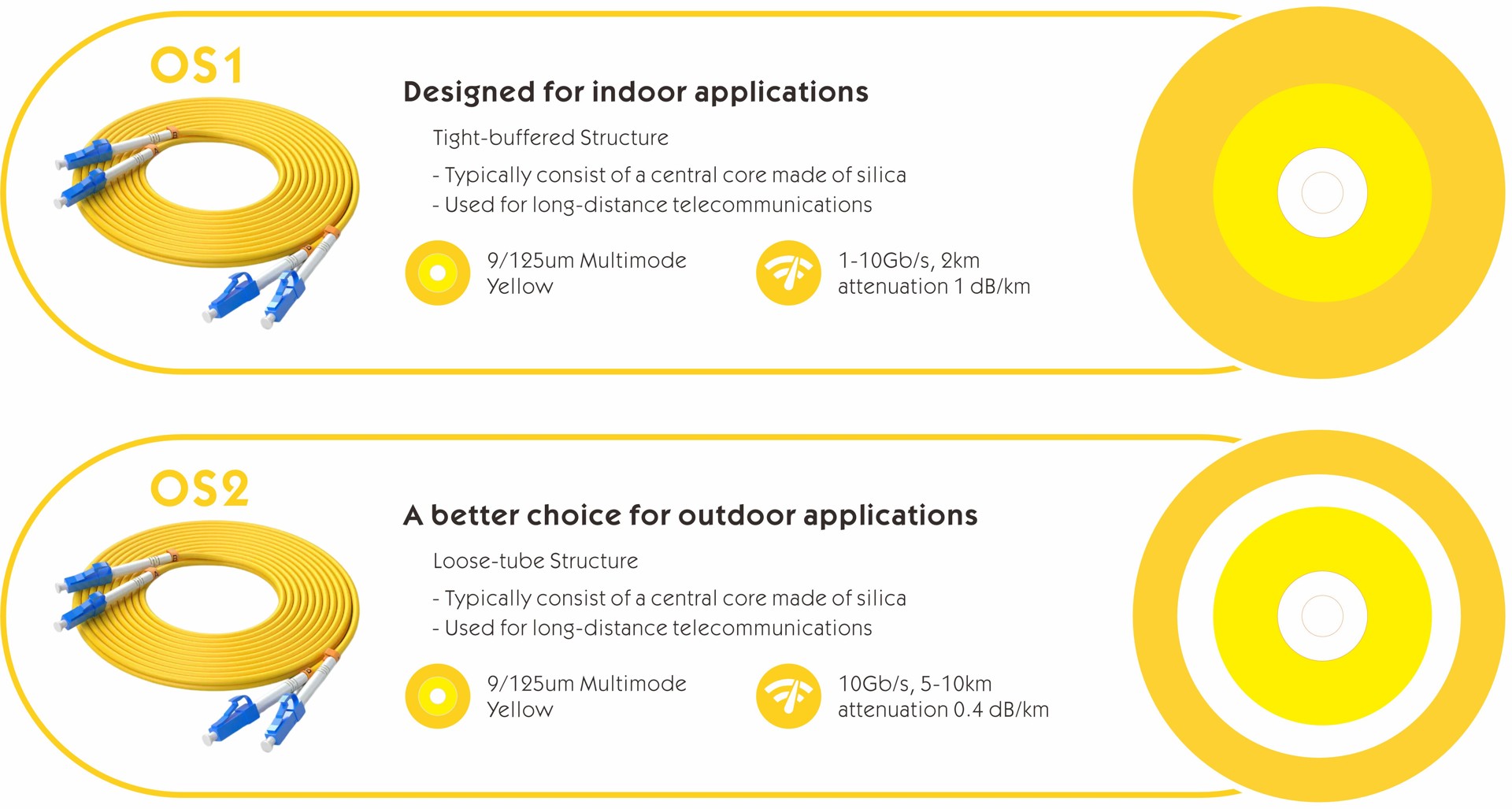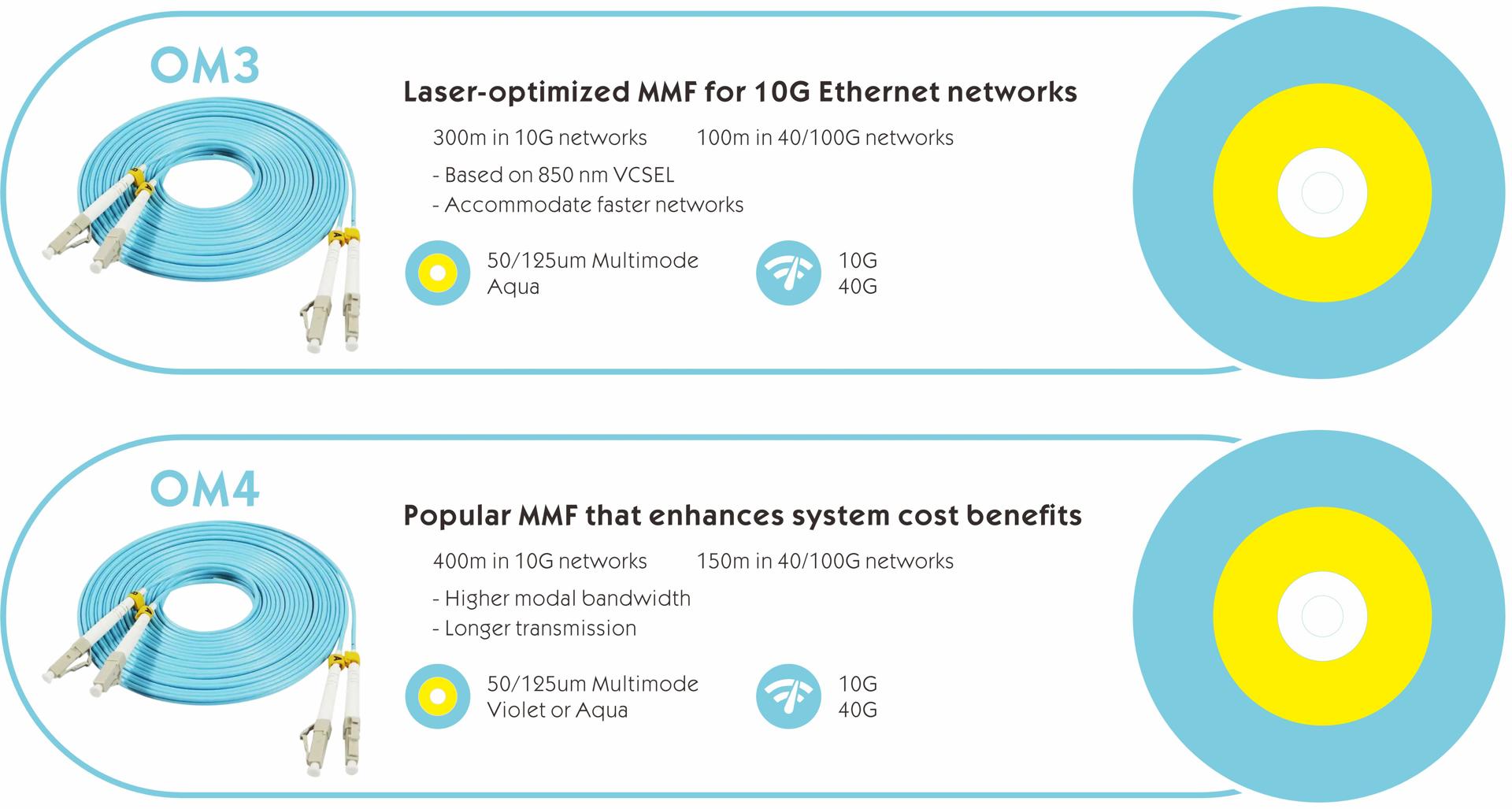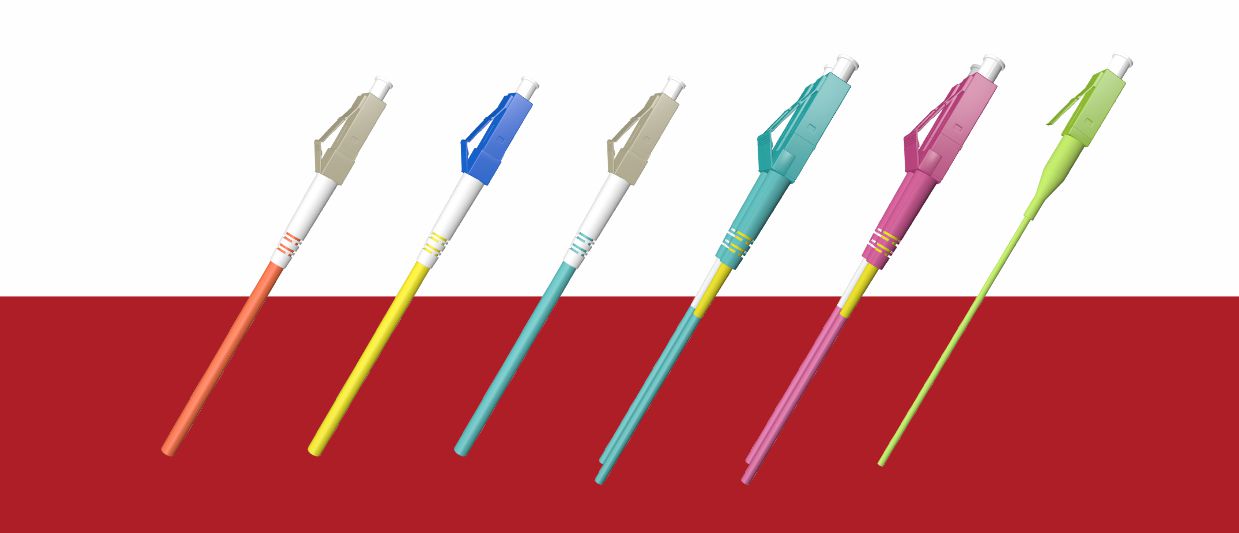Cable & Wire | High quality and excellent service at reasonable prices.
info@zion-communication.com
Author: James Publish Time: 26-06-2025 Origin: Site
The deployment of fiber optic cables has dramatically improved the data transmission process due to the high capacity of the cables and reduced latency. Nonetheless, with fiber type selection comparable to other options, the consideration turns of single mode vs multimode. Be it a data center architecture, a campus network backbone, or a metropolitan coverage, knowing single-mode and multimode fiber deliberation is critical.
This guide explains single mode and multimode optical fiber differences in structure, distance, cost, transfer speed, types of connectors, and of widely used network standards, so that you can have a better knowledge and confidently make a decision on which Fiber fits your application requirements.
The fundamental difference is the mode of light propagation through the fiber.
Single mode fiber (SMF) has a small core size (~9 µm), which permits only one mode of light (the fundamental contribution) to be propagated straight along an optical fiber. This lessens the signal attenuation and modal dispersion, subsequently making it suitable for long-distance communication - possible to reach, however, up to tens of kilometers of distance without amplification.

Multimode fiber (MMF) fibers, on the contrary, have a larger core, namely 50 or 62.5 µm, which makes it possible to move in several light modes or paths. This eventually leads to modal dispersion, which imposes a bandwidth dragged speed of propagation, and thus, limiting the distance, but less costs for short-range applications can be maintained.

The foundational concepts of single mode fiber vs multimode fiber - core size, capacity for bandwidth, and distances - are key differences.
Feature | Single Mode Fiber | Multimode Fiber | OM2 | OM3 | OM4 | OM5 |
Core Diameter | ~9 µm | 62.5 µm | 62.5 µm | 50 µm | 50 µm | 50 µm |
Cladding Diameter | 125 µm | 125 µm | 125 µm | 125 µm | 125 µm | 125 µm |
Light Source | Laser Diode (LD) | LED | LED | VCSEL | VCSEL | VCSEL (with SWDM) |
Typical Wavelength | 1310 nm / 1550 nm | 850 / 1300 nm | 850 / 1300 nm | 850 nm | 850 nm | 850 nm + Shortwave Division Multiplexing (SWDM) |
Bandwidth (MHz·km) | Virtually unlimited | 200 | 500 | 2000 | 4700 | 28000 |
Typical Jacket Color | ● Yellow | ● Orange | ● Orange | ● Aqua | ● Aqua or ● Violet | ● Lime Green |
Common Connectors | LC, SC, MPO | ST, SC, LC | SC, LC | LC, MPO | LC, MPO | LC, MPO |
Application Scenarios | Long-haul, metro, telecom | Legacy LAN, short runs | LAN, building | Data centers, 10G+ | Data centers, 40/100G | High-density, 100G–400G+ |
Typical Transceiver Cost | Higher | Lower | Lower | Medium | Medium | Medium |



■ Fiber Optic Connector Types: LC, SC, MPO
Lucent Connector (LC): The small form factor used for both single mode and multimode fiber, often in data centers and telecom.
SC (Subscriber Connector): The much bigger version with a robust design, which is mostly seen in outdated networks and multimode installations.
MPO/MTP (Multifiber Push On): A high-density connector that accommodates 12, 24, or even more fibers, runs the optical parallel with optics in the 40G/100G and beyond family, utilized for both SMF and MMF.
■ Multi mode vs single mode Fiber: The Distance & the Network Standards
The transmission distance is one of the most important factors of the whole process of choosing single mode fiber vs multimode fiber optic cables. Below is a summary of the typical distance limit for these Ethernet and Fibre Channel standards listed and their relation to fiber type.
Network Standard | OS2 (SMF) | OM1 (MMF) | OM2 (MMF) | OM3 (MMF) | OM4 (MMF) | OM5 (MMF) |
1 GbE 1000BASE-LX | 5,000 m | — | — | — | — | — |
1 GbE 1000BASE-SX | — | 275 m | 550 m | 550 m | 550 m | 550 m |
10 GbE 10GBASE-LR | 10 km | — | — | — | — | — |
10 GbE 10GBASE-SR | — | 33 m | 82 m | 300 m | 400 m | 400 m |
25 GbE 25GBASE-SR | — | — | — | 70 m | 100 m | 100 m |
40 GbE 40GBASE-LR4 | 10 km | — | — | — | — | — |
40 GbE 40GBASE-SR4 | — | — | — | 100 m | 150 m | 150 m |
100 GbE 100GBASE-LR4 | 10 km | — | — | — | — | — |
100 GbE 100GBASE-SR4 | — | — | — | 100 m | 150 m | 150 m |
Fibre Channel 8 Gbps | 10 km | 21 m | 50 m | 150 m | 190 m | 190 m |
Fibre Channel 16 Gbps | 10 km | 15 m | 35 m | 100 m | 125 m | 125 m |
Fibre Channel 32 Gbps | 10 km | — | 15 m | 70 m | 100 m | 100 m |
Note: The "—" means that no official or ordinary implementation for these distance rates has been developed on that type of fiber.
■ How to Identify between Single Mode Fiber and Multimode Fiber
Core size: It can be seen as a microscopically small focus but invisible to the naked eye.
Jacket Color:
Single Mode: ● Yellow
Multimode: OM1 — ● Orange (OM1/OM2), ● Aqua (OM3/OM4), ● Lime Green (OM5)
Labeling: Usually found as "SM" or "MM" at the connector's joint or on the patch panel.
Transceiver Type: Single mode fiber transports data through laser sources while multimode fiber use LEDs or VCSEL as its data carriers.
Getting to know those identifiers will save your company money from fabricating an incorrect configuration between the feature of the fibers.
■ Cost Considerations: Multimode vs. Single Mode Fiber
The Multimode transceivers, as a result of the use of VCSEL technology, are cheaper than single mode, but multimode cables, with respect to OM4/OM5, can be more expensive than SMB connectors.
Single mode optics are more expensive to purchase, but SMF cable itself appears to be cheaper and capable of supporting longer and more sophisticated networks.
It is usually compressive and cheaper MMF for links of less than <300 m.
SMF is often better for long haul or future-proofing, despite the higher transceiver costs.

■ When to Choose Which?
Choose Single Mode Fiber if:
When the transmission distances exceed 500m.
Applications for metro, access, or core networks installation.
Upgrades for 40G/100G+ are predicted for the near future.
Maximum bandwidth and low attenuation are priorities.
Choose Multimode Fiber if:
Budget constraints exist.
For environments where the linkers are short (inside buildings or data centers).
You want transceivers that are inexpensive.
Alternatively, fast, low-cost 10G to 40G connections can be introduced.
■ Frequently Asked Questions
Q: Am I able to connect multimode and single mode fiber together?
A: No. The consequences are high optical loss rates and poor performance, although due to the mismatching between the sizes of the cores and modal characteristics.
Q: Can a narrowband transceiver work with a wideband fiber?
A: Yes, it is normally no due to high losses. There are such instances including use of mode conditioning cables or media converters.
Q: Is multimode really better than single mode?
A: Not basically. That is, it’s determined by the distance, speed, budget, or your future plans with the network.
■ Conclusion: Single Mode vs. Multimode Fiber — My Summary Thoughts
This section of the comparing guides to the difference in the choice of transceiver, the price of installation, and network flexibility. No matter the case of fiber optic single mode and multimode, SMF and MMF, or MMF and SM fiber, fiber optic deploying and upgrading registration will lead you to define a cost-effective solution.
The bottom line:
SMF can be used when you cover long distances or take into account future network development.
MMF is cheaper, which can help save money at start when short-range deployments are needed.
Whatever you choose, make sure your fiber type takes into account the system characteristics, connectors, and the speed roadmap.

James is a technical manager and associate at Zion Communication.
Specializes in Optical Fiber communications, FTTH Solutions,
Fiber optic cables, ADSS cable, and ODN networks.
james@zion-communication.com
+86 13777460328
